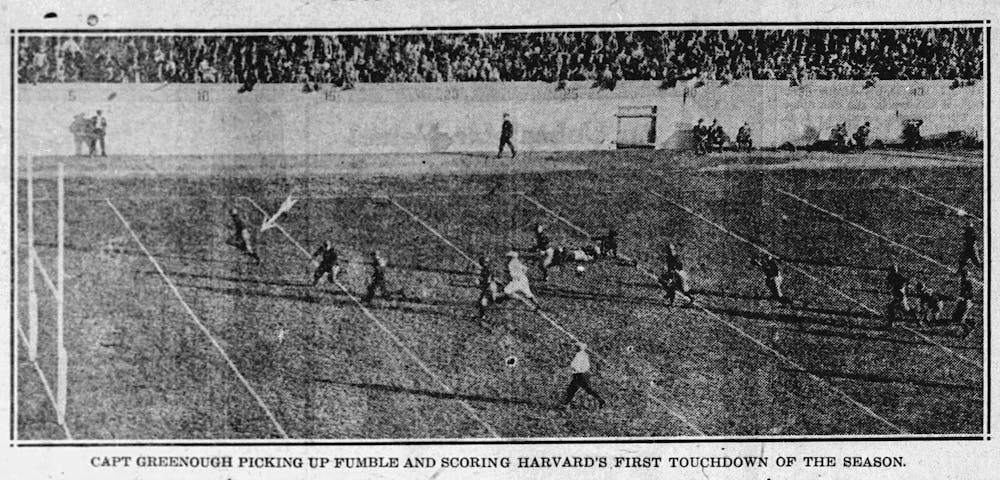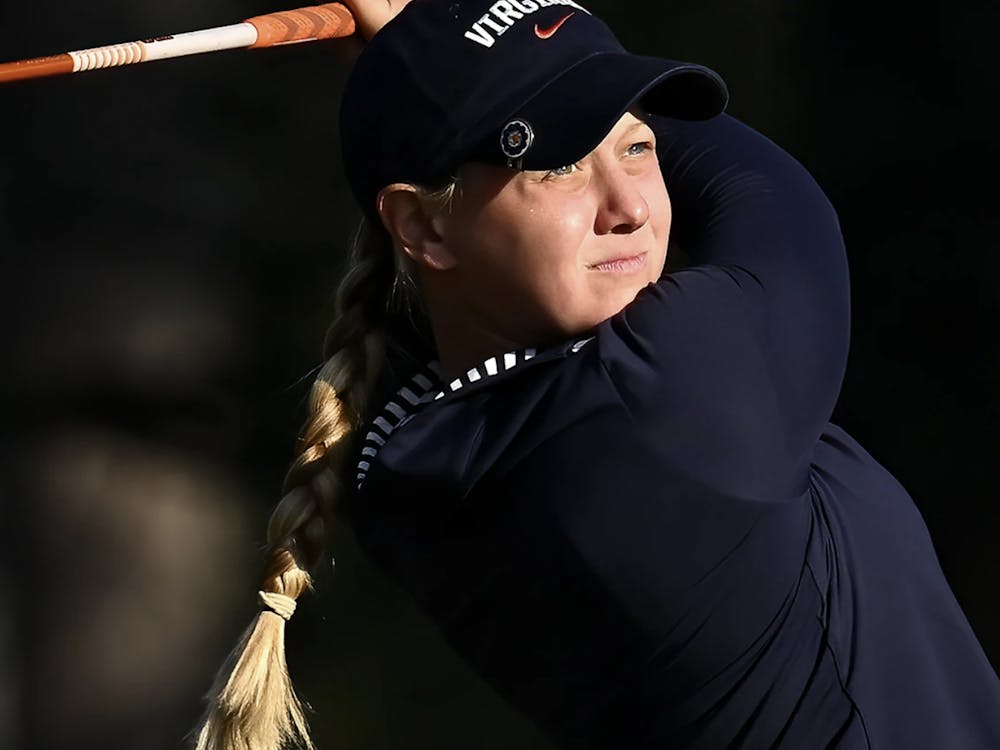Even by the standards of the storied football programs of Harvard and Virginia, Oct. 11, 1947, was a colossal day in collegiate football. 76 years ago, Harvard tackle Chester Pierce became the first Black college football player to face an all-white school below the Mason-Dixon line when he traveled to Charlottesville to compete against the Cavaliers. Even on the 76th anniversary of this milestone moment in sports, its lasting impact on the University and the changes towards equity it led to across college athletics are still seen today.
Prior to 1947, northern, integrated schools had a “gentlemen’s agreement” with southern, all-white schools. If the two schools contracted an agreement to play each other south of the Mason-Dixon line, then the northern school would leave any Black players it fielded behind. The all-white home team would then sit any players it had of equivalent skill in order to ensure a fair game. This unwritten rule was ironclad from nearly the invention of college football.
This agreement had begun to dissolve, though, even before 1947. The recently ended Second World War had forced young men of all races to work together to survive and defeat common enemies on the battlefield. Going back to school after the war, these same men could not understand why they were not afforded those same equitable opportunities on the gridiron.
In 1946, both Penn State and Nevada refused to travel south to face teams that wouldn’t take the field against Black players, the latter citing that they would rather forfeit than be forced to play without teammates.
This set the stage for Pierce to make history in Harvard’s visit to Charlottesville in 1947. Pierce was a senior starter on the football team and also a letterman for the Crimson’s lacrosse and basketball teams.
The game was contracted in the late fall of 1946. During the summer of 1947— just a few months after Jackie Robinson had broken baseball’s color barrier — Harvard football’s leaders wrote a letter to Larry Baumann, Virginia football captain and Class of 1948 alumnus, to inform them that Pierce would travel to Charlottesville to play in the October game. When the Cavaliers voted on whether or not to take the field against an integrated team, the squad unanimously decided to play.
Local politicians and University officials did everything in their power to keep Pierce from making the trip, only relenting after Harvard Athletic Director Bill Bingham rejected several appeals.
The locals did not take well to Pierce. Because of his skin color, the lineman was made to enter a Charlottesville restaurant through the back door and was not allowed to sleep in the Monticello Hotel. On both occasions, fellow Crimson players accompanied and stayed by his side the whole way, sleeping in alternate properties and entering establishments through Blacks-only doors.
Before the game, newly appointed University President Colgate W. Darden Jr., a segregationist, pleaded with fans at a Friday night pep rally to be respectful to Pierce.
“Chester Pierce, a Negro, is a guest of the University of Virginia, and nothing would shame us more than having an unfortunate incident during the game,” Darden said.
Based on accounts from Harvard players, his pleas went unheeded.
''There were people on horseback circling our bus waving Confederate flags and giving rebel yells,'' running back Paul Lazzaro said. ''I thought, 'My God, where are we? What country are we in?”’
During the game, it was more of the same.
''It was a disgrace,'' Harvard lineman Jim Fenn said. ''There were some ugly incidents in the stands, with a lot of people waving Confederate flags and some idiots yelling terrible slurs.''
College Topics noted that Pierce had exited the field to cheers and mentioned none of the chanting, flag-waving or hooliganism in an editorial after the game.
While Pierce faced hostility from the crowd, he was supported by those around him. Pierce’s teammates and coaches continued to protect him, with Coach Dick Harlow inviting Pierce to walk onto the field by his side.
Pierce was also welcomed by the Black population of Charlottesville. Hundreds of Black locals clustered around the practice field to watch Pierce. Several hundred more showed up to support the lineman before the game, too.
''There was a large crowd of Black folks clustered along a cyclone fence by the players' entrance,'' punter Wally Flynn said. ''They must have numbered about 200, and they cheered Chet as we passed through. It gave you goosebumps.''
In addition, both Pierce and Ray “All the Way” Brown, Virginia running back and Class of 1948 alumnus, recalled no on-field incidents taking place between the players.
Despite the significance of the occasion, the game itself was not close. Harvard’s best player, captain and fullback Vince Moravec, injured his leg early in the game and the Crimson only gained 63 yards on the way to a humiliating loss. The Cavaliers routed the Crimson 47-0, in front of a then-record 22,000 fans at Scott Stadium. It was their first victory in eight attempts since the schools’ first matchup in 1915 and Harvard’s largest defeat of the 20th century. The game may have been a blowout, but Pierce had blazed a trail.
Soon, it was commonplace for Black players to play against, and even for, Southern schools in all but the most segregated states. The last real holdout of segregated college football was the University of Alabama, where legendary coach Bear Bryant consistently clashed with racial hardliner Gov. George Wallace over whether or not they could field Black players. Alabama fielded its first Black football player in 1971, the same year Virginia’s team desegregated.
Virginia as a school continued to wrestle with its racial identity as a school. The University was willing to allow Black graduate and professional students into the school starting in 1950 but remained steadfast in a segregated undergraduate experience until Brown v. Board of Education.
Pierce would go on to become a legend in his own right, getting an M.D. from Harvard Medical School, working at Massachusetts General Hospital as a psychiatrist, helping create Sesame Street and consulting for NASA. He rarely talked publicly about his groundbreaking game before his 2016 death. Only once did he grant a full interview about it, to famed Boston journalist George Sullivan in The New York Times.
''It was no big deal and took no courage by me,'' Pierce said to Sullivan. ''Historically, the time was right, among all of America's changes after World War II. I just happened to be in the right place at the right time. That it happened then and there was a tribute to Harvard.''
In 2007, 60 years after the game and 10 years after his interview, Pierce returned to Charlottesville, not to commemorate his groundbreaking accomplishments on the field, but to receive the University’s Vivian Pinn Distinguished Lecturer’s Award for “lifetime achievement in the field of health disparities.”
On average, Black players make up 57 percent of college football teams, and at Southeastern Conference schools in the deep south, that number is over 60 percent as of 2021. This is thanks to the courage of Pierce, the determination of his teammates but also to the will of the Virginia football team standing strong in the face of adversity. Administration and politicians repeatedly tried to enforce the status quo, but ultimately, the Cavaliers made history by playing a football game that still resonates 76 years later.







